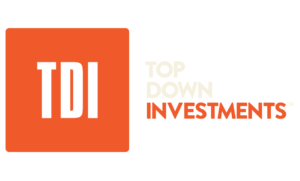Duncan is a small town central to the two largest cities on Vancouver Island, Victoria & Nanaimo. Duncan is part of the Cowichan Valley Regional District (CVRD) which, together with the District of North Cowichan, encompasses the entire Cowichan Valley, with Duncan as its city centre. When commuting from Nanaimo to Victoria, Duncan is the largest centre that the Trans-Canada Highway passes through on your journey.
Duncan is the smallest city (by area) in all of Canada, but most people refer to much of the surrounding area (CVRD) as Duncan.
So…. why Duncan?
A colleague of ours put it best – when looking for markets to enter, you must determine if there is ‘energy’ in the area or if you have to create ‘energy.’ What he means by ‘energy’ is – is there a buzz? Is there already a reason for consumers, business owners, and developers to enter the market? Is there a need for infrastructure upgrades?
If not, do you know how you will create that ‘energy’?
Finding markets with ‘energy’ and creating ‘energy’ within markets are viable options; however, they require two completely different strategies. Creating ‘energy’ is much more complex than finding it!
When doing our due diligence on Duncan, we immediately looked at the surrounding areas. Nanaimo, located just 30 minutes to the north, has seen an average of 1.88% population growth annually between 2016 and 2021. Thirty minutes south in Victoria, there was an average of 1.6% annual growth during the same period. Canada only grew 1.04% annually between 2016 to 2021; this indicates an above-average population growth in these nearby cities.
An increased population means an increase in demand for space and resources. This forces the need for more amenities, more housing, and better infrastructure. The need for these additional resources will create jobs and opportunities, leading to a further increase in population and creating a higher demand for space and resources. As demand increases from population growth, housing in these city cores typically increases, pushing people farther away and even out of the city.
This is that ‘energy’ or “buzz” mentioned earlier. Above-average population growth, infrastructure upgrades underway, and substantial development in these nearby cities give us confidence that there was existing ‘energy’ in the area.
Next, it was time to dive deep into Duncan itself. With pressure on these nearby cities, Duncan saw an average population growth of 35% beyond the national average between 2016 and 2021. The Cowichan Regional District or CVRD saw an average annual increase of 21%. The important centres saw even higher growth, but the pressure to move to neighbouring communities grows as they grow. This is an excellent indicator of an emerging market.
With the local population growth, we researched the current infrastructure upgrades and what is planned shortly. At the time, in early 2021, some standard upgrades were underway, such as stormwater, sewer, roadway, & tourism upgrades. It was the larger projects that caught our attention, including a new RCMP detachment ($50M) that is now underway, a new hospital ($900M) scheduled to break ground in the summer of 2022 and the local high school ($82M) is being replaced with a completely new facility opening in 2024. These large infrastructure projects require over $1B in provincial and federal funding. This definition of ‘energy’ is a critical indicator of an emerging market.
With ‘energy’ present in nearby cities and starting to build in Duncan, we decided to narrow our search to the local Real-Estate market, specifically the rental market, as that is our niche. Looking at Canada Mortgage and Housing Corporation data, Duncan has a sub 1% vacancy rate. This indicates a high demand for rental housing.
This chart shows the median rent in Duncan, BC, from October 1990 – Present. (Please Note: These rent figures represent current rents, but the going rate for a one-bedroom apartment in Duncan is $1200 – $1500).
Some additional items that show great opportunity is the plan to revise, change, and update the Official Community Plan for both the City of Duncan & the Cowichan Valley Regional District. This will allow us to participate in the master plan of these communities to support and help create even more ‘energy.’
So, why did we choose Duncan?
Want more information?
LET’S TALK!






